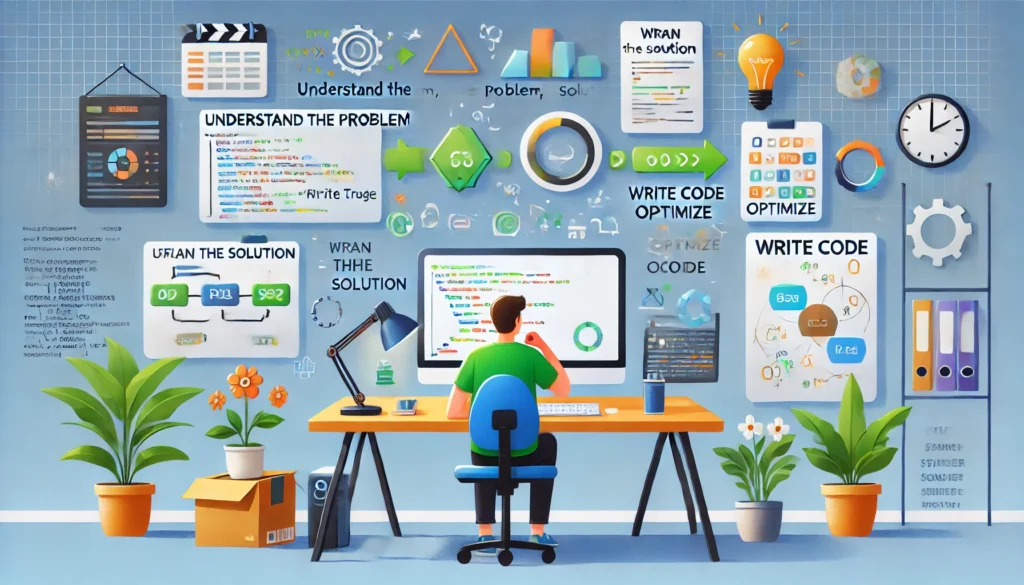Pair programming is an interview technique where you and an interviewer (or another developer) work together to solve a problem. It’s a collaborative approach that allows interviewers to assess not only your coding skills but also your communication, problem-solving, and teamwork abilities. While pair programming can seem intimidating, with the right mindset and preparation, it can be an excellent opportunity to showcase your strengths.
In this article, we’ll explore key tips on how to navigate pair programming during a technical interview effectively.
1. Understand the Purpose of Pair Programming
The primary goal of pair programming is to see how well you can collaborate and solve problems in a real-world environment. The interviewer isn’t just evaluating your ability to write code but also how you communicate, take feedback, and explain your thought process.
Key Takeaway: Treat pair programming as an opportunity to show that you’re a team player who can think critically and communicate clearly, not just a coder.
2. Be Open to Discussion and Suggestions
Pair programming requires continuous communication. Don’t hesitate to talk through your thought process as you work. Explain why you’re choosing a particular approach or why you prefer one solution over another.
Key Tips:
- Explain your code: As you write, verbalize what you’re thinking. This helps the interviewer understand your approach and gives them a chance to provide input.
- Be open to feedback: If the interviewer suggests a different approach, don’t be defensive. Be willing to discuss their ideas and collaborate on the solution.
3. Ask Questions to Clarify Requirements
At the beginning of a pair programming session, you may be given a problem statement. It’s essential to ask questions to clarify the task before diving into the code. This shows that you’re thorough and want to fully understand the requirements before making decisions.
How to Approach:
- Ask clarifying questions: If something about the problem is unclear, ask for more details. For example, “Should the solution prioritize performance or simplicity?” or “Are there edge cases we should consider?”
- Confirm understanding: Repeat the problem back to the interviewer in your own words to ensure you’re on the same page.
4. Maintain a Collaborative Mindset
Pair programming is about collaboration, not competition. It’s important to engage with your partner respectfully and work together to solve the problem. Even if you’re confident in your approach, be sure to listen to their ideas.
Key Points:
- Avoid taking over: Don’t dominate the session by trying to do everything yourself. In pair programming, the goal is to work together.
- Balance talking and listening: Share your ideas, but also allow the interviewer to contribute their thoughts and suggestions.
5. Handle Mistakes with Grace
Making mistakes is normal, especially in the high-pressure environment of a technical interview. What matters is how you respond to those mistakes. A key aspect of pair programming is learning to debug collaboratively and handle setbacks with a positive attitude.
How to React:
- Acknowledge mistakes: If you notice an error, acknowledge it and move forward. Saying something like, “I see where I went wrong here” shows that you’re focused on problem-solving rather than getting stuck on errors.
- Work together to fix bugs: Pair programming is a shared effort, so involve the interviewer in debugging. For example, ask, “Do you see what I might be missing here?”
6. Stay Calm Under Pressure
Pair programming sessions can feel intense, especially when you’re being evaluated. However, staying calm and composed will help you think clearly and solve problems more effectively. If you feel stuck or unsure, take a deep breath and focus on the next step.
Tips for Staying Calm:
- Break down the problem: If you’re overwhelmed, break the problem into smaller parts and tackle each one step by step.
- Communicate your thought process: Even if you’re unsure about the solution, continue to explain your thoughts. This allows the interviewer to guide you or offer helpful hints.
7. Practice Pair Programming Before the Interview
One of the best ways to prepare for pair programming interviews is to practice. You can do this by pairing up with a friend or colleague on a coding problem or participating in mock interviews that simulate real-world pair programming scenarios.
Why Practice Matters:
- Familiarity with the format: The more you practice, the more comfortable you’ll feel with the collaborative nature of pair programming.
- Improving communication skills: Regular practice helps you develop the ability to articulate your thoughts clearly and concisely while coding.
Conclusion
Pair programming in a technical interview is as much about collaboration and communication as it is about writing code. By staying open to feedback, asking clarifying questions, and maintaining a calm, collaborative approach, you’ll be able to demonstrate your technical skills and teamwork abilities effectively. Remember, the interviewer wants to see how you think and work with others—so focus on building a positive and productive dynamic during the session.




